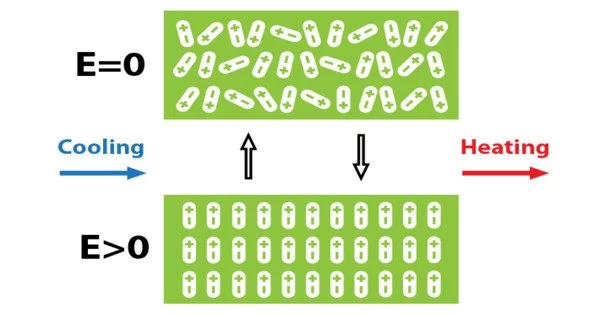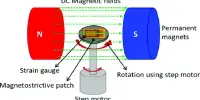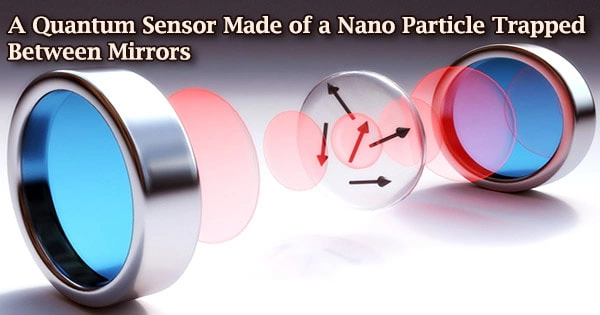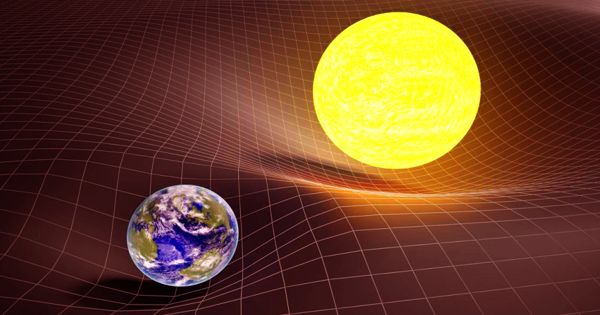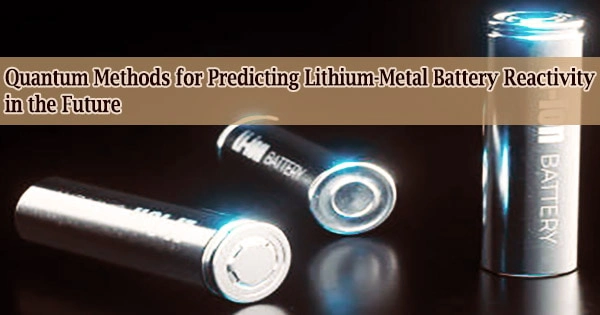The electrocaloric effect is a phenomenon in which the temperature of a material change in response to an applied electric field. When an electric field is applied to a material, it causes the polarization of the material to change, which in turn alters its temperature. It is frequently thought to be the physical inverse of the pyroelectric effect. It is not to be confused with the Thermoelectric effect (specifically, the Peltier effect), which occurs when a current is passed through an electric junction containing two dissimilar conductors.
The electrocaloric effect has potential applications in solid-state refrigeration and cooling, as well as in thermal energy harvesting and storage. It is particularly attractive because it offers a more energy-efficient and environmentally friendly alternative to traditional cooling technologies such as vapor compression refrigeration.
The underlying mechanism of the effect is not fully understood; for example, different textbooks provide contradictory explanations. However, as with any isolated (adiabatic) temperature change, the effect is caused by the voltage increasing or decreasing the system’s entropy. (An analogous, but better-known and understood, phenomenon is the magnetocaloric effect.)
Electrocaloric materials sparked significant scientific interest in the 1960s and 1970s, but were not commercially exploited because the electrocaloric effects were insufficient for practical applications, with the highest response being 2.5 degrees Celsius at 750 volts.
It manifests itself in the heating or cooling of an electrocaloric material under adiabatic conditions due to the applied electric field. For many decades, the electrocaloric effect has been known; however, the relatively small ECE observed below 2.5 K made it unsuitable for practical applications. However, materials with high ECE have recently been predicted and discovered, allowing for the realization of dielectric refrigeration, which has several potential advantages over other cooling technologies.
One of the challenges in developing electrocaloric materials is finding materials with a large enough electrocaloric effect to be practical for use in cooling applications. However, recent research has shown promising results in developing new materials with high electrocaloric coefficients. Overall, the electrocaloric effect is an area of active research with potential applications in a range of fields, including refrigeration, energy harvesting, and thermal management.
